Forces- the great rice challenge
Buoyancy and gravity
Buoyancy is also known as upthrust and is a force exerted by a gas (air) or liquid (water)that tries to push the object upwards, hence the name upthrust.
- a large bowl to fill with water.
- a piece of A4 paper
- aluminium foil
- scissors
- a tablespoon
- and some plasticine or a some other object that you can use as a small weight, such as a small stone.

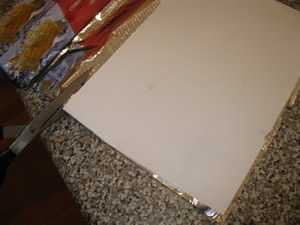
- be made entirely from an A4 sized piece of aluminium foil.
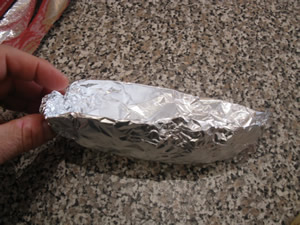

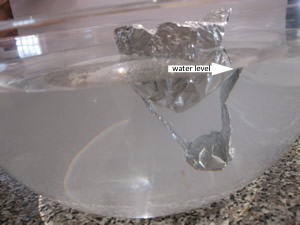
Push the boat into the water with your finger. You will feel a force exerted by the water pushing the boat back up. This force, exerted by the water, is known as buoyancy.
What do you notice about the level of the water in the container as you push the boat in the water?

1) Look at the model boat, shown on the right and built by Nicholas. It is floating on the surface of the water.
a) What two forces are acting on the boat to keep it floating on the surface?
b) The forces mentioned in a), above, are:
c) The boat has a little propeller
that provides a force to push it through the water. Since the boat is traveling at constant speed around the bowl which comment below is true?
d) The boat is traveling in a circle constantly changing direction as it hits the wall.
Which comment is true?
2) Zach was onto a record number of tablespoons of rice when all of a sudden his boat sunk into the water. Zach was asked to explain what happened. Which comment below is correct?

a) Name all the forces acting on the vessel.
b) Draw the arrows to represent the other two forces. Indicate the size of each force by drawing an appropriately sized arrow and indicate the direction in which the force is acting.
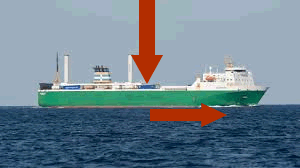
The Bermuda triangle has always being shrouded in mystery. Supernatural phenomena have being used to explain the many disappearances of cargo and military vessels from it's waters. Science may now have an answer. It has long being known that a great deal of gas deposits are found beneath the ocean floor in the Bermuda triangle. Could sudden releases of huge volumes of gas be responsible for the sinking of many vessels?
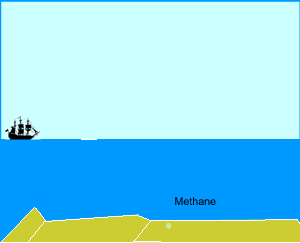
View the video on the right from the BBC.
4) What is a possible hypothesis being investigated?
5) Does the evidence support the hypothesis in 4) above?
6) What does this experiment tell us about a possible explanation?